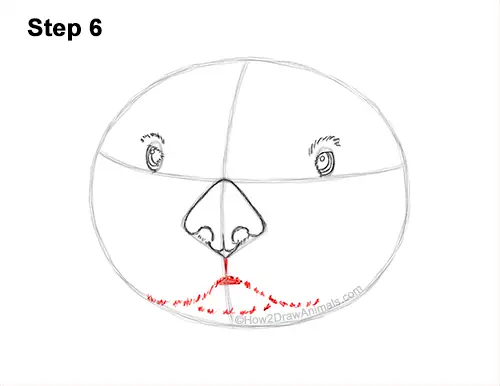
Step 6: Under the otter's nose, draw a line that curves to the left for the first half of the mouth. The line should stretch all the way to the edge of the big initial oval. Use short strokes for fur. To the right, draw a slightly longer, curved line for the other side of the mouth. Add a dark section in the middle of the mouth for the lower lip. Below the mouth, curved shape that's made up of short strokes for the furry chin.
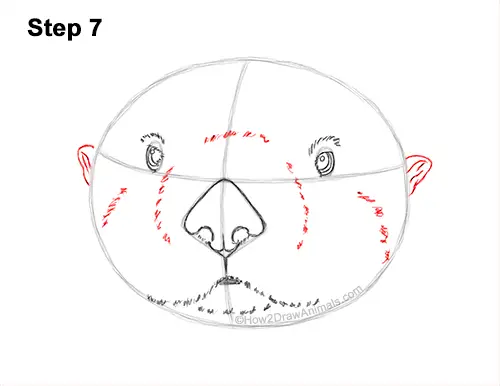
Step 7: Draw a few curved lines that are made up of short strokes around the nose for the sea otter's furry muzzle. These lines should for a circular shape around the nose. Add some lines on the sides of the head too. On the outer sides of the main oval, draw a few curved lines for the ears. The ear on the left should be slightly smaller. Draw a few lines inside the ears to give them structure.
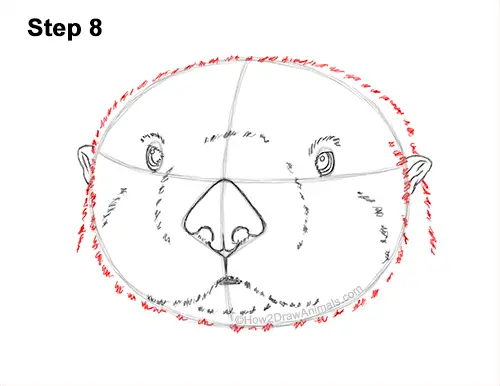
Step 8: Use the main oval as a guide to draw the rest of the head. Draw a series of short strokes along the basic path of the oval for the furry texture of the head. Don't make the strokes too long. Make the sides of the head a bit wider than the initial oval. Under the ears, draw vertical lines that are also made up of short strokes for part of the neck.
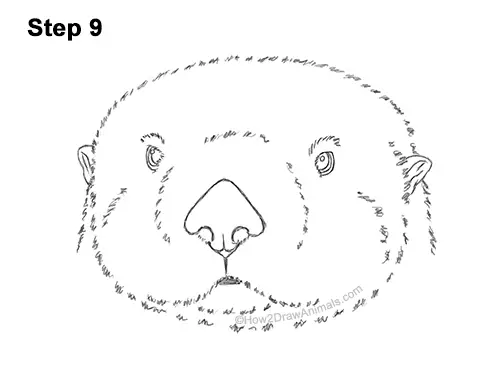
Step 9: For a cleaner look, erase as much as you can of the initial guide lines. Don't worry about erasing all of the guides. It's okay to leave some behind. Re-draw any final sketch lines you may have accidentally erased.
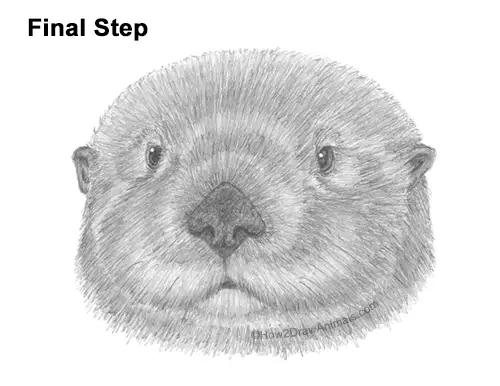
Final Step: Add some shading to your sea otter drawing for extra detail. Use a dark value for the pupils and the nose. Don't overlap the tiny highlight circles in the eyes as you shade. Add a slightly lighter value above the nose for a highlight. Use a medium and dark value on the ears. For a more detailed guide on how to shade, check out this tutorial: How to shade. Shade the rest of the otter's head using a series of strokes for a furry texture. Vary the pressure on your pencil to get different degrees of tonal value. As you shade, separate each individual stroke a bit so that the white of the paper comes through. Shade lightly at first, and then gradually build up to darker values. Use a lighter value around the muzzle for highlights on the fur. As you shade, use strokes that go in the general direction of the fur. The strokes should basically radiate outward from the middle. Shading can be time-consuming, so be patient and take breaks. Continue to add layers of short, medium-value strokes to build up the texture of the fur. It's a good idea to use reference as you draw for a more accurate depiction of a sea otter. That's it for the sea otter!
Thanks for visiting! Subscribe to the How2DrawAnimals YouTube Channel for a new tutorial every week.
To learn how to draw popular cartoon characters, visit EasyDrawingTutorials.com.
To learn how to draw Manga, visit How2DrawManga.com.
RELATED TUTORIALS
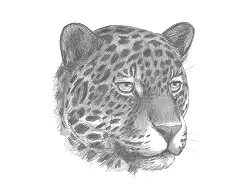 |
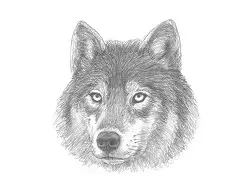 |
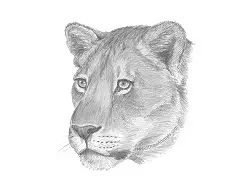 |







